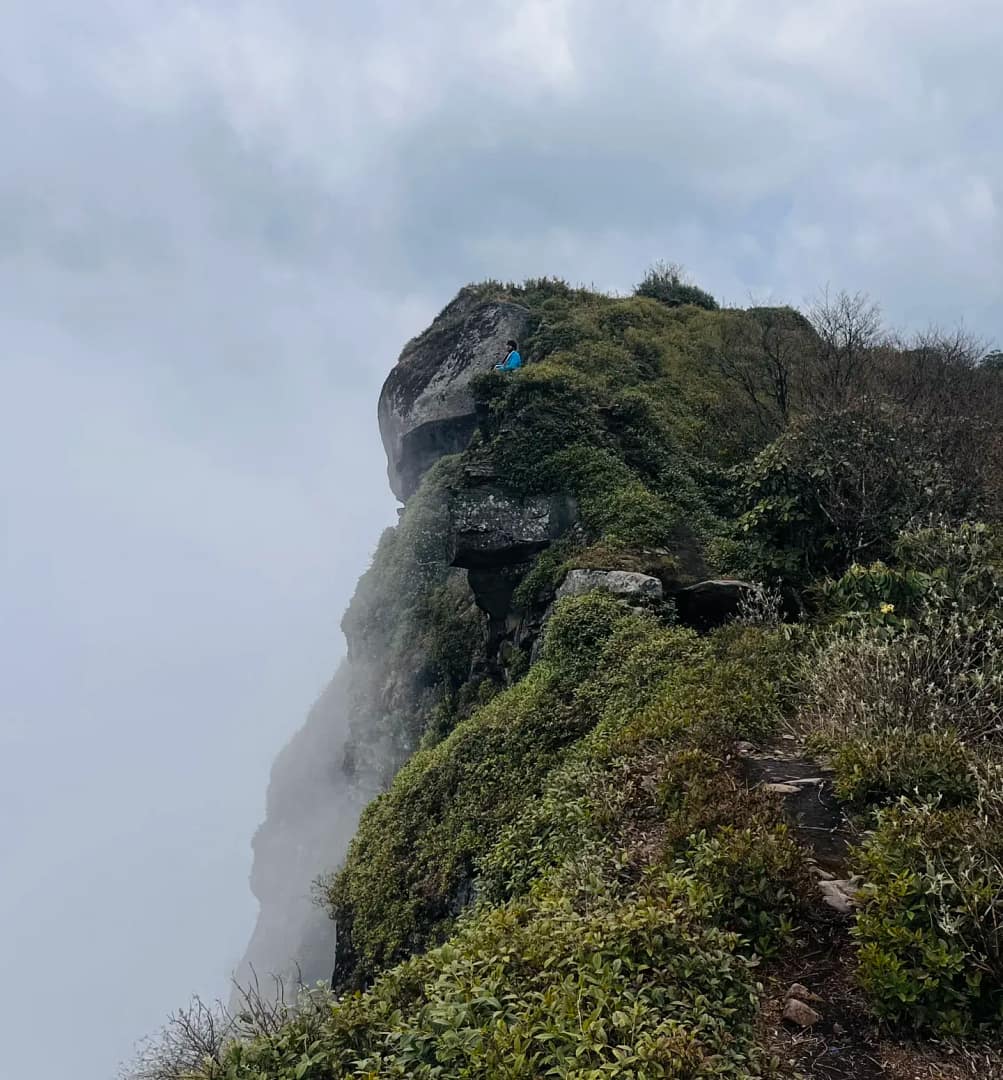
This was one of the most thrilling experiences I ever had. Though there are several treks in Himalayas which are much more popular that Japfu trek, none of them can be compared to Mount Japfu Peak Trek.
Why is that so?
First of all, it allows you completely escape the humans and connect with the nature. There are very few people who does the trek, making it peaceful and tranquil. Secondly, the trek has everything, farmlands, forests, straight pathways, and straight cliffs, allow you to experience a lot in one trek. Lastly, it challenges you to extreme. If you are able to reach the summit, it’s an achievement as not everyone can do that.
In this article, I will tell everything about the mountain, trek, things to do and not to do while climbing Japfu.
About Mount Japfu
Japfu Mountain has an elevation of 3,048 meters (roughly 10,000), making it the highest point in the Barail Range and second highest in the Nagaland. The mountain’s weather can change anytime or better if I’d say that the mountain has its own weather.
Moreover, it’s surrounded by Rhododendron Forest and also the home of the biggest Rhododendron tree. These forests have played an important role by being the home to several mammals such as clouded leopard, hoolock gibbon, and Asiatic black bear.
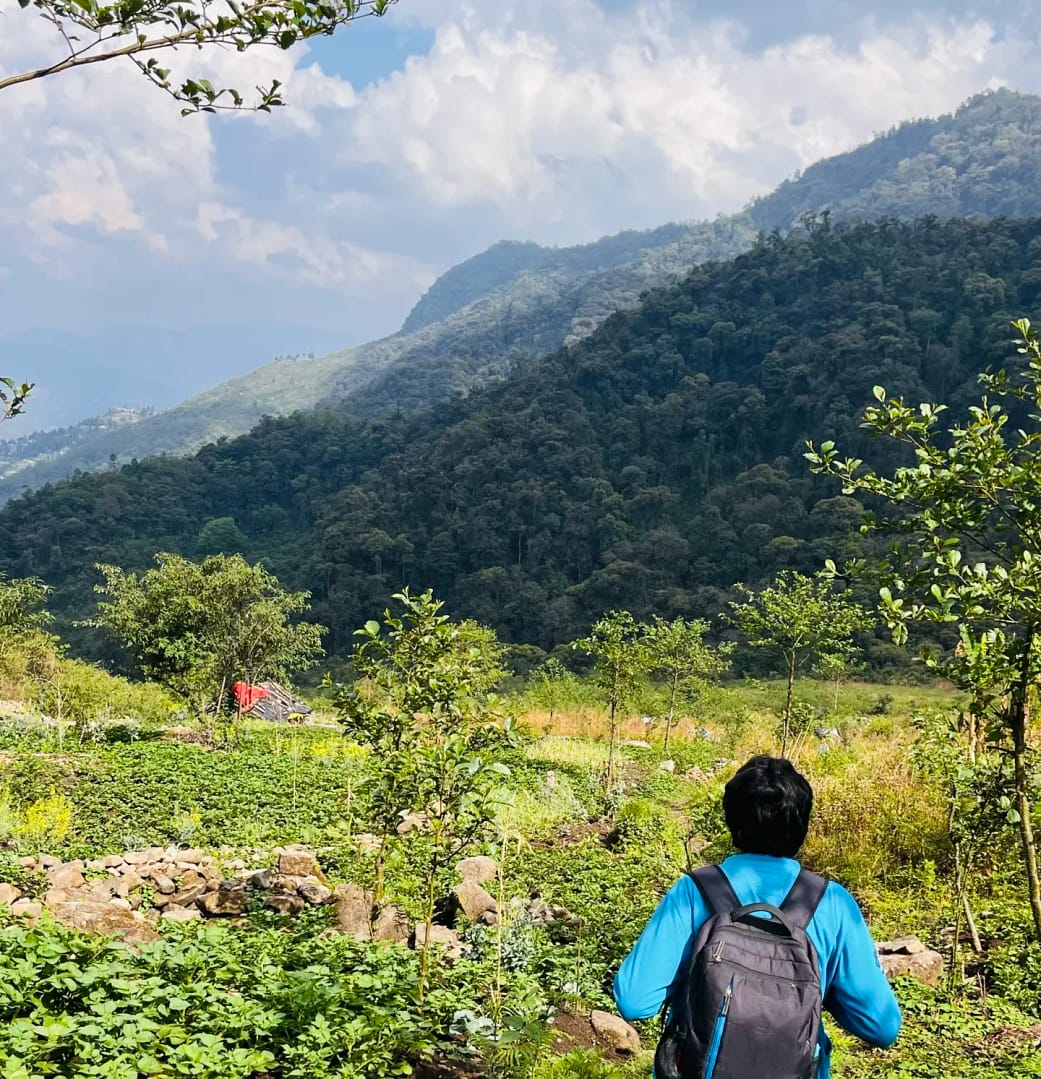
Checkout my vlog on Mount Japfu Peak Trek
Best Time to Climb Mount Japfu Peak
Honestly speaking, whenever you plan climb Mount Japfu Peak, there are going to be challenges. It depends on you what you wish to experience.
I climbed Mount Japfu in the month of April, which seems to me the best time. The temperature is not so low, not so high, during this period. However, everyday the weather changes drastically. Sometimes, evening during April or May mount it starts raining.
Months from June to August are not favorable due to heavy rains. The soil and rocks will become very slippery and can make the trek tougher and dangerous.
Late September and October months are the best ones as you’ll find more greenery due to rains and temperature will also be favorable. If you plan to travel after October, the temperature would be quite cold.
Though it makes the trek challenging, you might be rewarded with the snow on the Mount Japfu Peak. You can visit Mt Japfu before or after the famous Hornbill festival.
So, you’ll be able to visit Japfu in peace when there will be lesser public, and after that’ you’ll be able to attend the Hornbill Festival.
After Mid-December, Japfu experiences heavy snowfall and you must check with local guide whether it’s safe to trek during that particular day or not.
Overall, these are the preferred periods:
- Mid-March to Mid-May: Favorable temperature, lesser chance of rainfall
- Mid-September to October End: Favorable temperature, greenery all around, but rainfall may happen.
- Before or After Hornbill Festival: Chances to see snow and attend the Hornbill festival along with it.
How to Reach Mount Japfu Trek Starting Point?
To reach Mount Japfu trek’s starting point, you first need to reach Kohima. Kohima is a hill station in Nagaland, which is 70 km away from the capital city, Dimapur.
You can take a flight or train Dimapur and then rent a car or motorbike to reach Kohima. I have been there myself and though the terrain is hilly, it won’t take more than 1 hour 30 mins to reach Kohima as there is an excellent four-lane road.
After reaching Kohima, you’ll need to go to Kigwema village, which is 13 km away. It is better to stay in Kigwema for the night before the trek to avoid travelling early morning.
I stayed in Native Stories hostel, which is perfect for backpackers. You can find homestays and hotels in Kigwema.
From there, the trekking point is three km uphill, and you can reach there by vehicle. The trekking point will look like something shown in the pic added below.
From here, Mount Japfu Peak begins.

Mount Japfu Peak Trek: The Complete Experience
The complete trek took me three hour thirty minutes, but I am sure you can do it in a shorter span.
During the trek, you have to go through different terrains, and it starts with the forests and end with a ninety-degree climb. But don’t be scared, be confident and do it.
Crossing the Fields
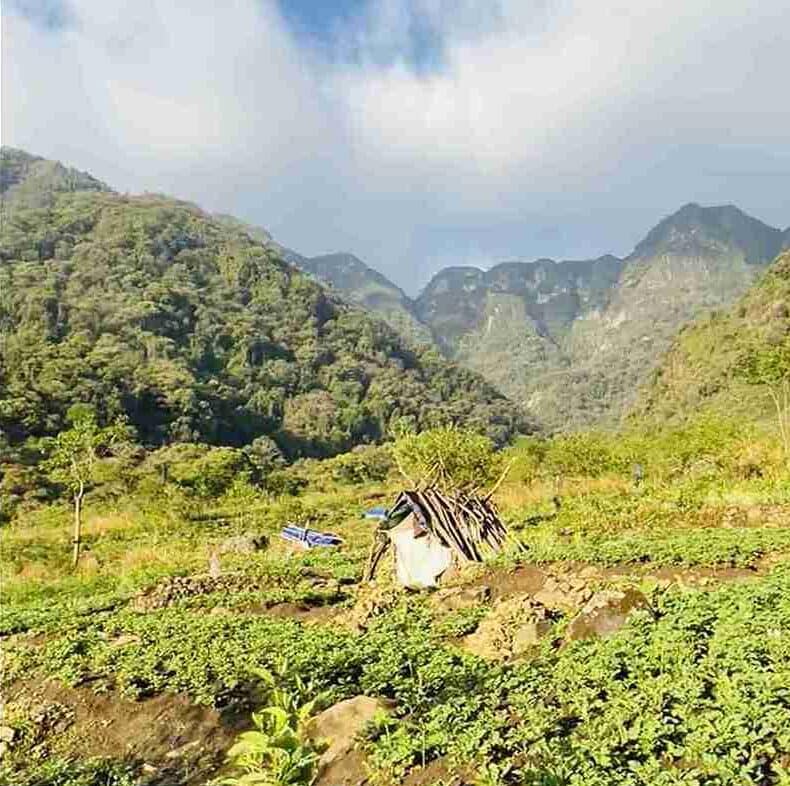
From the starting point, you directly enter fields where farmers mostly grow potatoes.
We started our trek at 5 am and there was already sunlight filling the fields with golden color, which is the best time to start the trek.
You’ll find Naga people working in their fields, some sleeping, some yawning, and some getting ready for the day. You can interact with them and even get some fresh veggies from them.
This is the easier and most delightful part of the trek where you enjoy the morning light, just walk through fields, have amazing views, and interact with people.
It took us 45 minutes to cross the fields, which lead in dense bushes.
The Jungle Passage
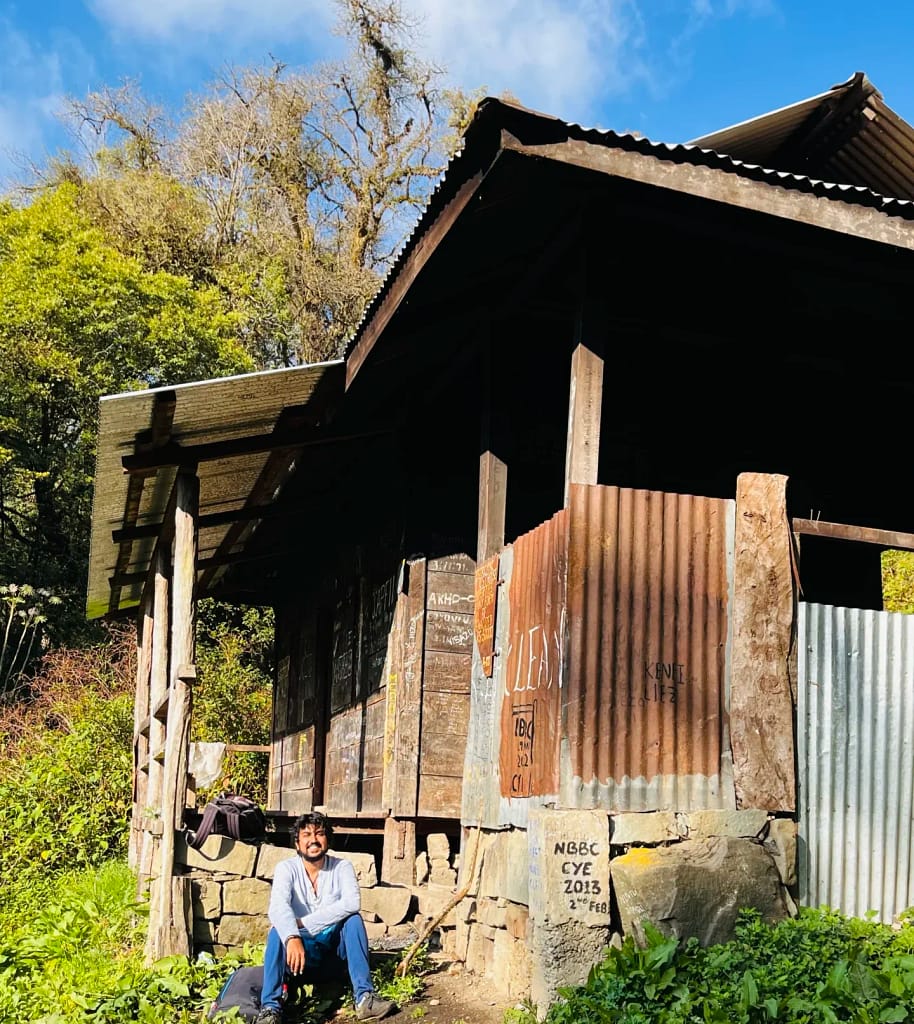
This is a challenging and the longest part of the trek where you enter the dense bushes and start steep climbing. After a while you’ll find the rest camp, which is a simple hut, especially made for trekkers to rest.
You have to cross many fallen trees, thin trails, and slippery ground. It will take almost one hour to cross the forest and reach to the road. It’s ok if it takes up to two hours. As you started early, it’s fine to go slow and enjoy the nature.
Walking on the Road
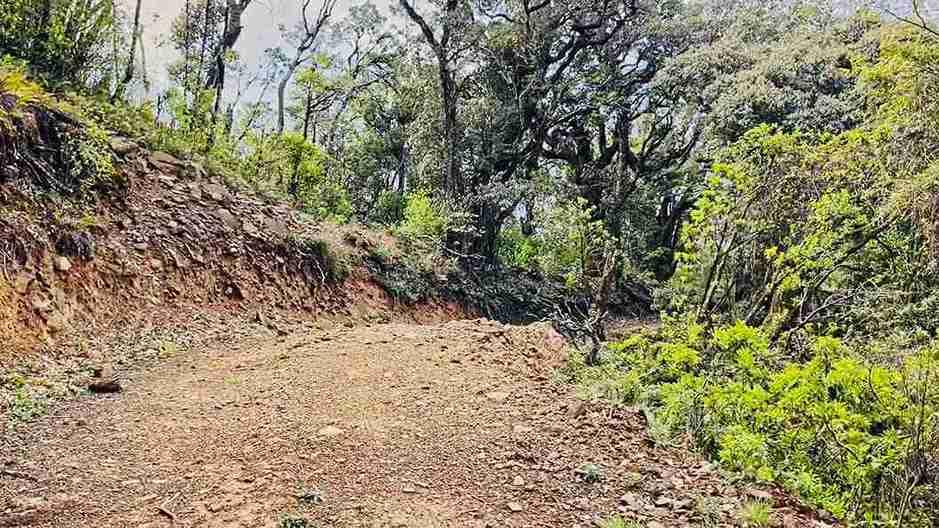
Once you reach on the road, things become easier for a while. You just have to walk for half an hour on the road and reach to the last part of the trek.
Honestly, it isn’t the fun part as you only have to walk but it gives you enough opportunity to relax and watch birds in Barail Range’s forests.
The Forest Starts Again

Once you reach on the end of the road, the steep climb begins, and this time it’s more challenging as there is no trail on walk on.
You just have to climb straight, using the roots of Rhododendron trees as stairs. It will almost take 30 mins to reach the final challenge which is the ninety-degree climb. However, to reach there, you’ll first need to climb two-three smaller cliffs that will test your ability.
The Scary Last Climb
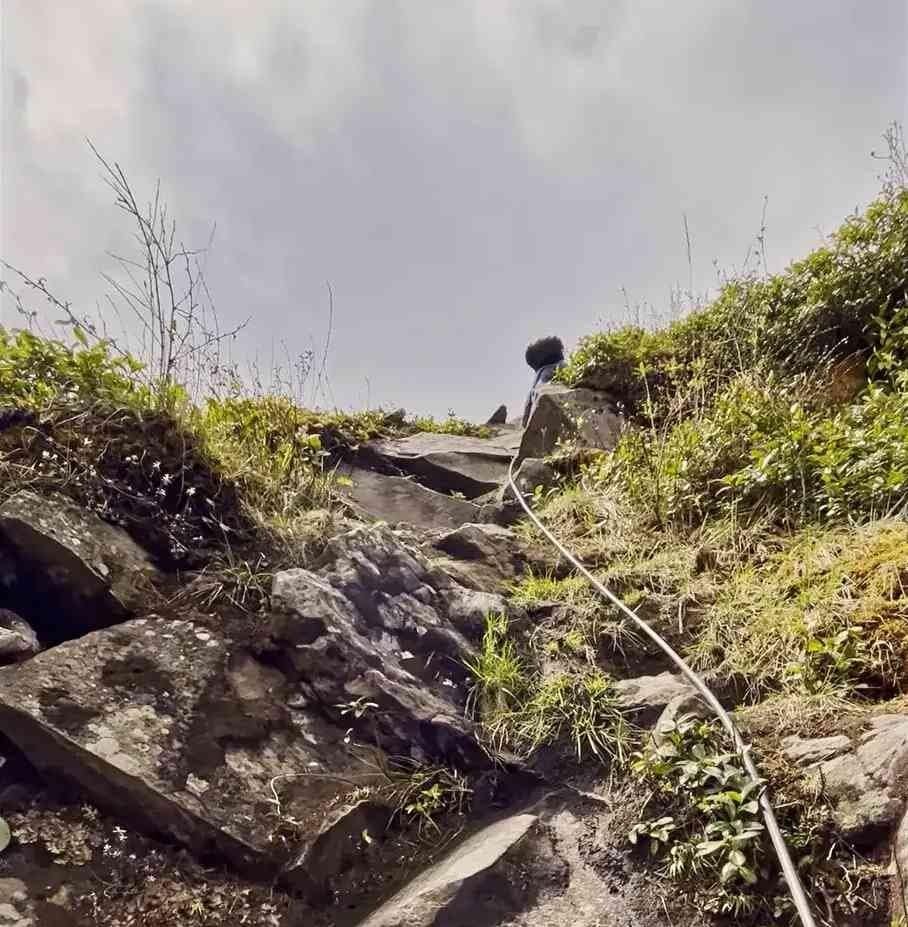
The Peak
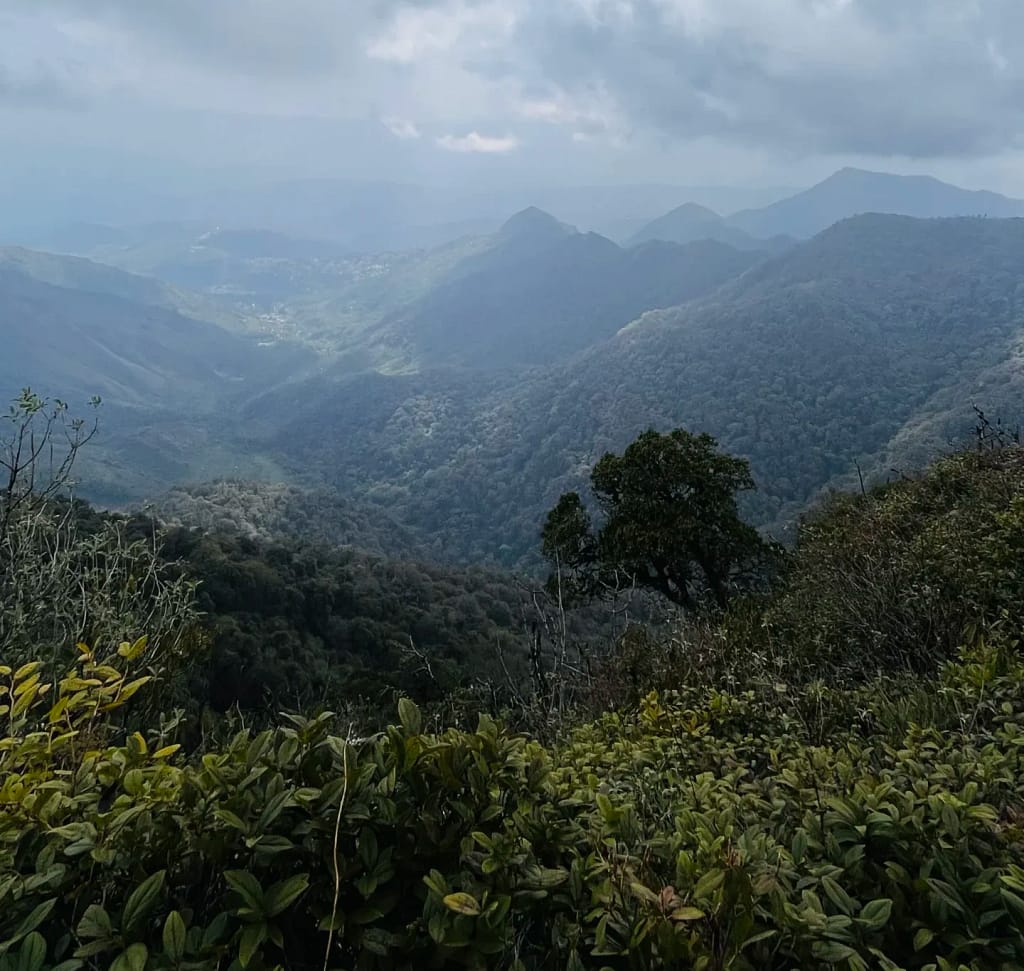
There is a cross on the peak and when you reach there, it means you have conquered it. The view from Mount Japfu really makes the trek worth it.
I was lucky enough to see sun from the peak, making the view clear and sometimes mystical, when clouds cover some of the portions.
You can walk forward and go to the extreme end of the peak, where the view is even better.
My guide and I stayed there for an hour, had the food we brought with us, slept on the grass, and started to descend.
Descending
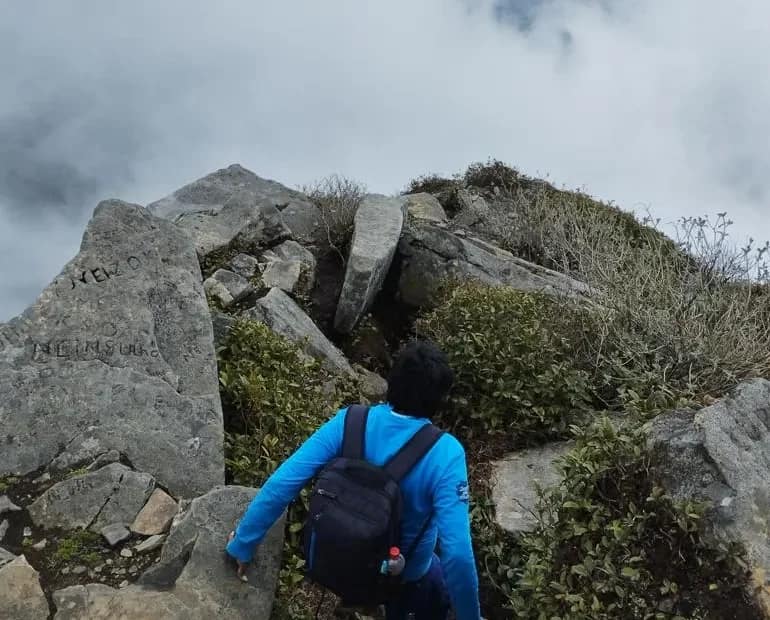
Usually, it’s the ascend that is tough but in case of Japfu peak, it was the opposite, at least when I was climbing down from the peak.
But it still took us lesser time in completing the descend. I reached back to the trekking point in two hour thirty minutes. My guide said that it was pretty fast and I am happy to know that.
Mount Japfu Night Trek
Some trekkers also do Mount Japfu Night Trek so that they can watch in the sunrise from the peak. As I didn’t know about it before reaching there, there was no chance of me to do it as it didn’t fit in my plan.
But, if you are reading this, this is something you can try, and hopefully, would love it. In
So, you start in the night around 8 pm, cross the farmlands and reach the rest camp. If you want to do in the sunlight, you have to start at 4 pm, which is too early. So, it would be better if you get well-prepared and start around 8 pm.
The rest camp doesn’t provide any facilities at all. It is only a hut to provide you with the shelter, so carry your sleeping bags with you.
There can be mosquitoes too, so a repellent would be a savior during night trek.
After spending the night, you start as early as 3 am as the sunrise occurs in Nagaland during 5 am. This is perfect if you are doing the trek in May month. You can start a little late during the winter night trek to mount Japfu.
Alternative Way to Reach Mount Japfu Peak
There’s another road that goes to mount Japfu peak. It starts from Kohima Science College. You have to take the same route that goes Pulie Badze. You need to offroad five kilometers to reach a junction where one road goes uphill and other goes downhill.
The road going uphill will take you to Pulie Badze peak whereas the road going downhill will take you directly to the last part of the Mount Japfu Trek.
The road was closed when I visited it due to some dispute. However, you can still walk on it.
This is an easier way, and you don’t need to cross the farmlands and forest in this option.
Things to do Near Mount Japfu
There are plenty of major attracts near Mount Japfu.
Dzukou Valley Trek
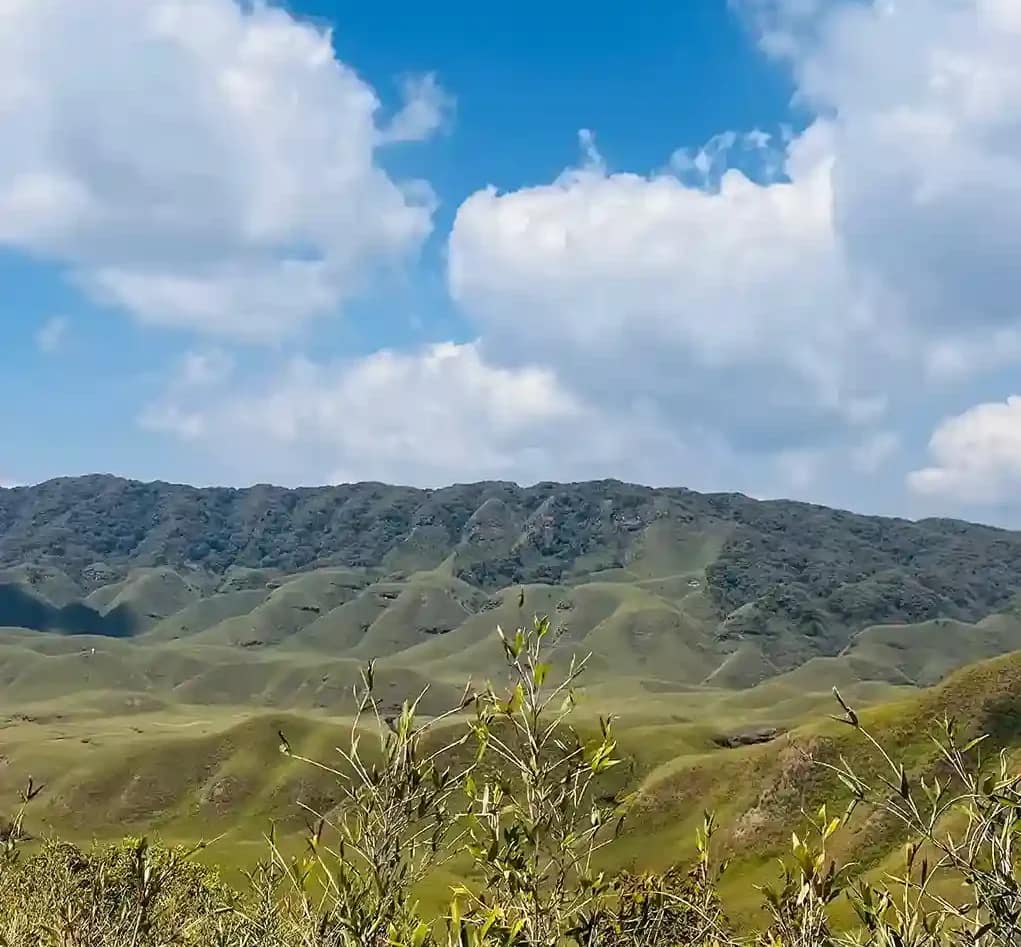
Dzukou valley is as beautiful as Mount Japfu Peak. For doing this trek, you have to go three kilometers ahead of Kigwema village. From there, one road on the right side goes uphill, you have offroad eight kilometers to reach the starting point of the trek.
The trek is quite easier in comparison to Japfu trek and only takes two hours to complete. When you reach to the end, you get the best views of the green valleys, filled with grass.
Explore Kigwema Village
Kigwema village is one of the most beautiful one, I have seen in North-East India. You can explore the roads, connect with people, go to church, and find out points from where you get the best views.
Kohima Attractions
Needless to say, as Kohima is nearby, you must visit the places such as War Cemetery, museum, insect market, and Pulie Badze.
Things to Remember During Mount Japfu Trek
- Always start as early as possible so that you can go slow as trek could be tiring.
- Don’t even think of it without proper trekking shoes.
- It will feel like never-ending but it will, trust me.
- Take a guide with you if you are doing it for the first time. Here is the guide’s number: Mr. Medo: +918787596683. Usually, the guide charges Rs 1500 but it’s fine up to Rs 2,000 depending upon the requirement and demand.
- Stay in Kigwema village to avoid traveling in morning.
- Stay confident while doing the last climb.
- You will get some medicinal plant on the way. Ask your guide about it and you can pack some of it for yourself.
- Carry a stick with you while walking. It will make things easier.
- Carry a mat with you so that you can rest on the way.
Frequently Asked Questions About Mount Japfu Peak Trek, Kohima Nagaland
What is the Japfu Peak famous for?
Japfu Peak is famous of its panoramic views, windy air, medicinal herbs, tough climb, and biodiversity.
Where is Japfu?
Japfu is the highest mountain in the Barail Range, located thirteen kilometers southwest from Kohima city and three kilometers west from Kigwema village. You can trek here in 3 to 4 hours.
How to reach Japfu Peak?
First, you’ll have to reach Kohima and from here, you’ll need to drive to Kigwema village. You can reach Japfu by trekking through rhododendron forest in 3 to 4 hours.
Which river originate from Mount Japfu?
Doyang river originate from Mount Japfu. Doyang is the longest river in Nagaland, passes from Kohima district, and flows northwards to Zunheboto and Wokha District.
Which trees are found near Mount Japfu?
Mt Japfu is surrounded by Rhododendron trees, and it’s also the home to highest Rhododendron Mountain.
Which is the second highest mountain in Nagaland?
Mount Japfu is the second highest mountain in Nagaland.
What is the altitude of Japfu?
Mount Japfu has an altitude of 3,048 meters (10,000 feet).